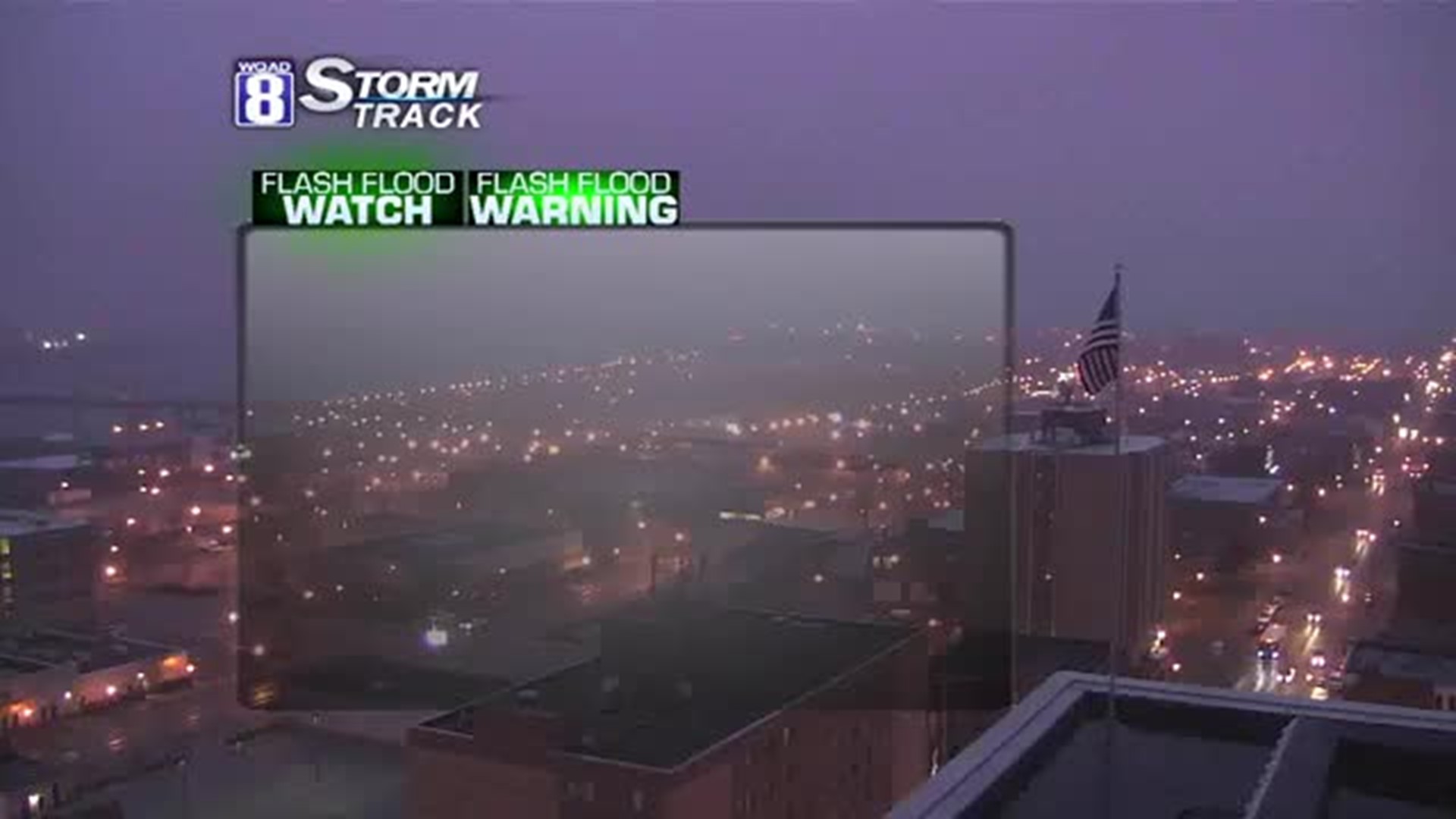1. Severe Storm Risk:
Our team of Meteorologists, as well as folks at the National Weather Service and Storm Prediction Center, will let you when to expect severe weather. However, it's important to know that in April and May, severe weather is most likely to occur in the late-afternoon and evening hours. In the Summer, the Midwest can see damaging thunderstorms with more frequency at night. In addition, you may have heard the terms "slight, moderate, and high" used with respect to severe weather risk. This year, there are additional threat levels. Click here to learn more.
2. Flash Flood Watch:
The weather forecast is such that thunderstorms will produce very heavy rainfall. When the atmosphere is warmer and more humid, thunderstorms can grow taller in the atmosphere and are able to produce more rain. A Flash Flood Watch is issued 12-24 hours in advance of very heavy rainfall.
3. Flash Flood Warning:
Rapid rises in creeks and streams is expected or is occurring. Of all dangerous weather, flash flooding kills the most people. In fact, more people die in flash flooding than tornadoes and hurricanes combined! Flash Flood Warnings usually last 1-2 hours...as flood conditions quickly subside after the rains stop.
4. Flood Warning:
Flood Warnings are issued for more widespread floods. River flooding is taken care of with this type of warning. These usually last several days.
5. Severe Thunderstorm Watch:
Conditions are favorable for dangerous weather to occur within the next 2-6 hours. Watches are issued before storms form. Wind gusts above 60 m.p.h. and or hail larger than quarters is possible. Remain alert!
6. Severe Thunderstorm Warning:
Dangerous weather is occurring in the form of damaging wind greater than 60 m.p.h. which can blow trees over and lift roofs off of homes. Also, when hail exceeds quarter-sized, warnings are issued because they are big enough to cause injury or death. Severe Thunderstorm Warnings usually last less than 45 minutes.
7. Tornado Watch:
A Tornado Watch is issued when dangerous weather is possible in the next 2-6 hours. Tornado Watches are issued less frequently than Severe Thunderstorm Watches. Atmospheric conditions are favorable for the largest storms to have rotating updrafts, a precursor to tornado development. Tornado Watches last 2-6 hours.
8. Tornado Warning:
A tornado has been sighted by a trained storm spotter or detected by Doppler Radar. This is the time to act and seek shelter in your safest place. This is not the time to go outside and look for the tornado. You are wasting precious time to prepare yourself. Tornado Warnings usually last less than 45 minutes. Lead-time for tornadoes has grown significantly in the past few decades. In the 1970s, the public may have only had a few minutes to react. Today, warnings are issued in as much as 45 minutes in advance of tornadoes. Still, when you are in a warning, seek shelter immediately!

